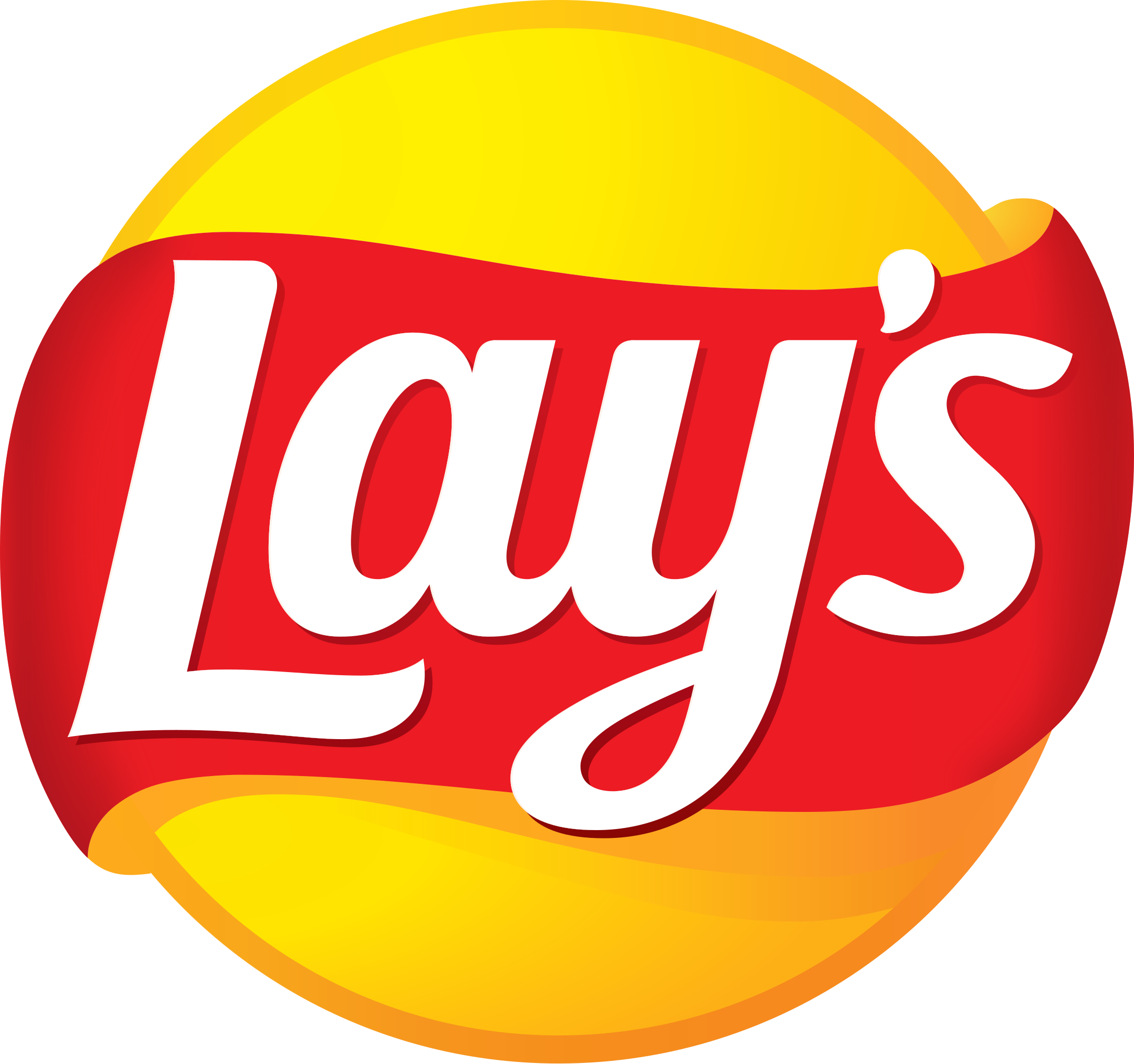From Sunlight to Success: The Story of Heritage and Innovation Behind the Lay’s Logo
Everyone around the world recognizes the bright, cheerful Lay’s logo — the golden sunburst circle, the flowing red ribbon, and the familiar wordmark that instantly evokes the satisfying crunch of one of the most iconic snacks ever made. To millions, it represents comfort, quality, and shared joy.
But behind that simple design lies a fascinating story of creativity, heritage, and branding brilliance — one that stretches from a small Tennessee snack business in the 1930s to a global powerhouse that still embodies warmth and optimism nearly a century later. The Lay’s logo isn’t just a mark; it’s a symbol of how tradition and innovation can blend perfectly to create timeless appeal.
The Humble Beginnings: Herman Lay’s Vision
The Lay’s journey began in 1932 when a young entrepreneur named Herman Lay started selling potato chips out of the trunk of his car in Nashville, Tennessee. At the time, few could have imagined that his small regional venture would become one of the most beloved snack brands in the world.
Lay wasn’t just selling chips — he was selling trust, taste, and consistency. He built his company on the promise that quality would never be compromised, and his natural talent for marketing helped transform Lay’s from a local favorite into a national brand.
In 1961, Herman Lay’s company merged with The Frito Company to form Frito-Lay, and soon after, the brand became a core division of PepsiCo. This merger marked the beginning of Lay’s global era, blending Southern hospitality with the precision of corporate innovation. As the business expanded, so did the need for a logo that reflected its identity: warm, joyful, and instantly recognizable.
Designing Joy: The Evolution of the Lay’s Logo
The Lay’s logo has gone through several transformations over the decades, each carefully crafted to reflect the brand’s growth while preserving its essence.
At the heart of the modern design lies a golden yellow circle, inspired by the Frito-Lay sun emblem. This radiant shape symbolizes warmth, energy, and happiness — the emotions the brand wants consumers to feel every time they open a bag of chips.
The color yellow plays an essential psychological role. It’s associated with positivity and friendliness, instantly creating a welcoming vibe that appeals across generations and cultures. The golden hue also mirrors the color of perfectly fried potato chips — subtle but powerful visual storytelling.
Overlaying the sun is the dynamic red swoosh, a ribbon-like flourish that adds energy, motion, and excitement. Red has long been a strategic choice in food branding because it stimulates appetite and draws the eye. When paired with yellow, it forms one of the most effective color combinations in advertising history.
The red ribbon also conveys a sense of celebration and vitality — reinforcing Lay’s position not just as a snack, but as part of life’s joyful moments. Whether it’s a family picnic, a movie night, or a late-night craving, Lay’s fits effortlessly into occasions that bring people together.
Typography with a Smile
Another unsung hero of the Lay’s logo is its typography. The wordmark, with its rounded, friendly letters, mirrors the brand’s approachable and inclusive spirit. Each curve feels intentional — soft enough to evoke friendliness, yet structured enough to convey trust.
The font flows naturally with the red ribbon, maintaining perfect visual balance. Unlike harsh or overly stylized fonts, the Lay’s lettering invites consumers in. It’s casual yet professional, timeless yet modern — a delicate balance that few brands achieve so effortlessly.
More Than Design: A Symbol of Heritage
What makes the Lay’s logo truly iconic is its emotional connection. Beyond colors and shapes, it carries nearly a century of memories — from Herman Lay’s entrepreneurial grit to PepsiCo’s innovation-driven expansion.
Each design revision has honored that legacy while adapting to changing times. The logo is both a tribute to the brand’s founder and a reflection of its modern identity as part of the Frito-Lay family — one of the most influential snack producers on the planet.
By incorporating visual cues from its parent company, such as the sunburst motif, the Lay’s logo establishes a quiet unity within the Frito-Lay portfolio while standing proudly on its own. This dual identity has been key to maintaining consumer trust across generations.
The Power of Color and Emotion
Color theory plays a critical role in why the Lay’s logo resonates so strongly. The golden yellow conveys optimism and comfort, while the bright red injects passion and enthusiasm. Together, they ignite a subconscious appetite response — the feeling of hunger mixed with happiness.
This powerful pairing has not only boosted Lay’s shelf visibility but also created a deep emotional link with consumers. Studies show that color alone can increase brand recognition by up to 80%, and Lay’s masterfully harnesses this principle.
That’s why, even from a distance or in a foreign supermarket, one glimpse of that yellow sunburst immediately triggers recognition. It’s not just marketing — it’s psychology done right.
An Emblem of Adaptability and Trust
Over time, the world has changed — and so has the design landscape. Yet the Lay’s logo remains strikingly relevant. How? Because it embodies adaptability without losing authenticity.
Every redesign — from the flatter modern versions for digital use to the subtle gradient updates that add dimension — respects the brand’s DNA. While trends have shifted from ornate to minimalist, Lay’s has managed to stay fresh without abandoning its core visual identity.
This consistency builds trust. In a marketplace flooded with new snack brands, Lay’s remains a beacon of familiarity. Consumers know exactly what they’re getting — great taste, dependable quality, and a sense of comfort that transcends borders.
A Lesson in Branding Brilliance
The Lay’s logo stands as a masterclass in strategic visual storytelling. It demonstrates how branding can communicate more than words ever could.
The bright colors say: We’re happy to see you.
The red swoosh says: We’re full of life and energy.
The rounded lettering says: We’re friendly, fun, and part of your day.
And the sun itself — the beating heart of the design — says: We bring warmth wherever we go.
In a world where consumers are overwhelmed by choices, this clarity of message is priceless. It’s why Lay’s has not only endured but thrived — because every element of its logo aligns perfectly with what the brand stands for: joy, togetherness, and timeless satisfaction.
Beyond the Bag: A Cultural Icon
Today, Lay’s isn’t just a brand — it’s a global cultural icon. Its logo appears in over 200 countries, sometimes under localized names like Walkers in the UK or Sabritas in Mexico, but always with the same golden glow that ties the family together.
From classic salted chips to exotic regional flavors, the Lay’s emblem represents consistency in taste and quality. And as the brand continues to innovate — with sustainable packaging, digital marketing, and new product lines — the logo remains the constant thread linking past, present, and future.
Conclusion: A Legacy in Every Curve and Color
The Lay’s logo is far more than a decorative label on a chip bag. It’s a visual narrative — one that tells of hard work, creativity, and human connection.
It honors Herman Lay’s entrepreneurial spirit, celebrates the Frito-Lay partnership, and continues to evolve as a symbol of happiness and trust. Its thoughtful blend of color, typography, and symbolism proves that great design doesn’t shout — it speaks warmly, confidently, and memorably.
So, the next time you open a bag of Lay’s, remember: behind that sunny yellow circle and red ribbon lies nearly a century of heritage, innovation, and joy. Each crisp isn’t just a snack — it’s a reminder of how powerful a story can be when told through design.

Adrian Hawthorne is a celebrated author and dedicated archivist who finds inspiration in the hidden stories of the past. Educated at Oxford, he now works at the National Archives, where preserving history fuels his evocative writing. Balancing archival precision with creative storytelling, Adrian founded the Hawthorne Institute of Literary Arts to mentor emerging writers and honor the timeless art of narrative.
